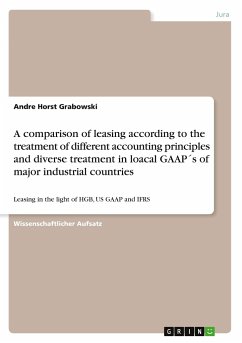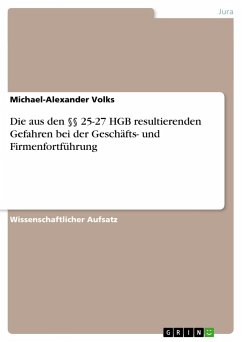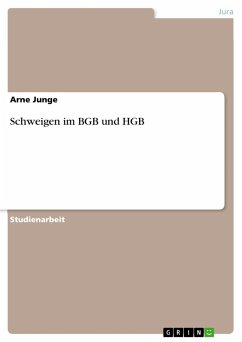Wissenschaftlicher Aufsatz aus dem Jahr 2011 im Fachbereich Jura - Zivilrecht / Handelsrecht, Gesellschaftsrecht, Kartellrecht, Wirtschaftsrecht, , Sprache: Deutsch, Abstract: Leasing is more and more understood as a modern form of financing of various assets, both in thecommercial and the private sector. Leases have now become an integral part of economic life. Withtheir multiple creative possibilities and variations, leases are an equitable alternative to buying andrenting for companies.The diversity of different forms of leasing, and the fact that there is no uniform lease contract as areference, results in lease accounting being one of the most difficult areas of accounting under almostall jurisdictions. [1] This diversity leads to an accounting system for leasing business with differentpossibilities to allocate positions in the P & L and balance sheet. Due to the lack of specific rules,leasing accounting is mostly based on general accounting principles. [2] In Germany, relevant taxdecrees have impact on the local accounting. Leases are, in principle, not fixed on legal contracttypes, and this allows temporary grant of use and utilization of liquidity-friendly financing alternativesin the balance-sheet. Since most major accounting systems presuppose exclusion of pendingtransactions from the balance sheet, [3] companies used contracts for grant of use, such as lease,deliberately to influence the accounting. For example, sale and leaseback transactions are used toreduce the balance-sheet debt, though the physical property mapping has not changed. [4]The current lease accounting under IFRS 17 of the IASB is to be understood as a reaction to theexisting situation in the various accounting systems. The aim of the standard setter was to capture themajor part of the grant of use in the balance sheet. All postings, which change the asset allocationsimilar to an investment, should also be accounted as such. [5] The concept of economic ownershipdivides any grant of use in leasing into two classes. The finance leases which, simply put, means alllong-term and investment-like grants of use, and operating leases, which are any other grants of use.This was still not sufficient for IASB members. Therefore chaired by Warren McGregor, the IASBissued a joint project with the U.S. Federal Accounting Standards Board (FASB), and since 2006, thelease accounting is on the agenda as an active reform project. Basis for reform efforts was the socalledMcGregor paper of 1996. [6][...]








